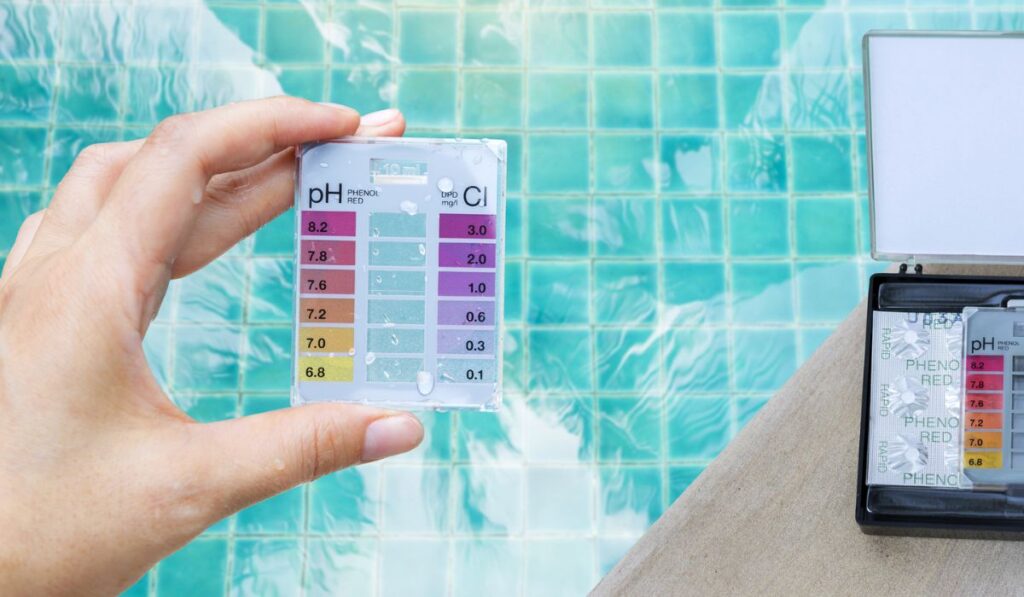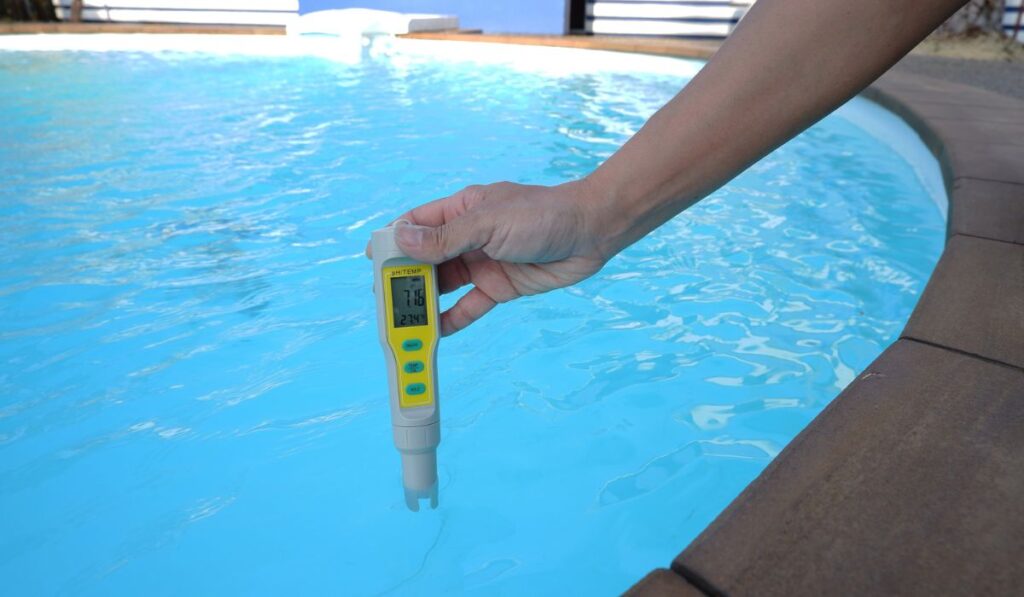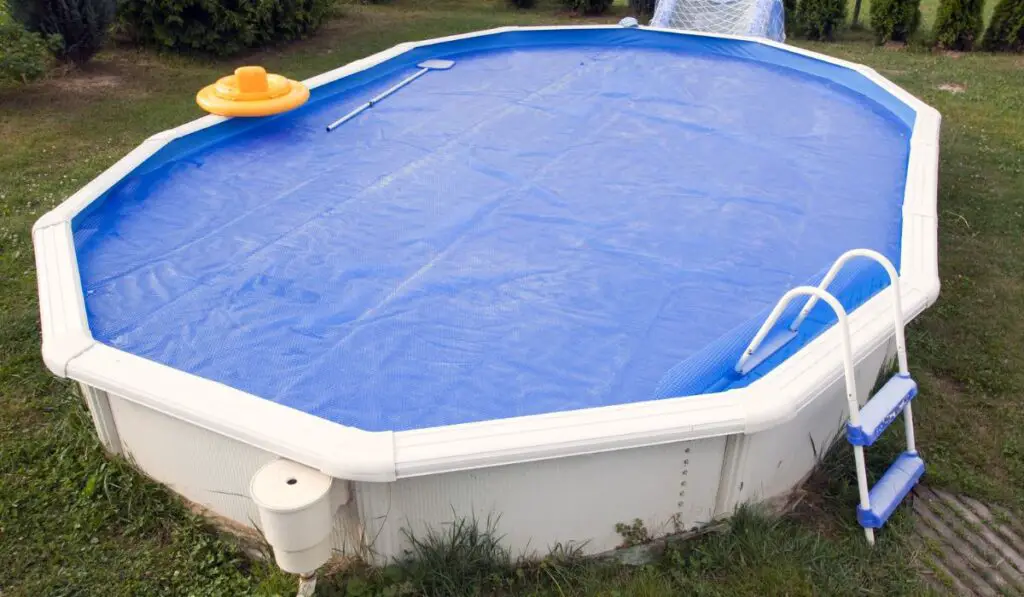Having a swimming pool can be the answer to the heat that is constant during the summer in some locations. But what do you do when the pH levels drop, causing your pool’s water to become acidic?
There are certain pH increasers like baking soda, borax, and soda ash that you may have around the house that can be added to your pool. Before you add them, however, you need to test the pH level of your pool to ensure you choose the right one for your situation.
Knowing how to raise the pH levels in your pool can seem like an extremely overwhelming task. Let’s look at some of the methods you can use to raise the levels, as well as the importance of the pH level in your pool.
How to Raise PH Levels in a Pool

If you have a pool in your backyard, then you know the importance of making sure that it is not only clean but that the ph and alkaline levels are at their very best. To do this, you will need to ensure that you are checking these levels regularly.
Discovering that the pH level of your pool is below where it should be can be frustrating but will need to be fixed before you can safely dive in. Raising the ph levels in your pool is not a difficult task, however, there are specific instructions you need to follow to ensure that it is done correctly.
Testing Your Pool’s pH Levels
Before you start the process of raising the ph levels in your pool, you need to ensure that you have the most accurate information first. This means even though you have likely tested the water before you add any chemicals to raise the levels, you need to test it one more time.
Knowing this information before adding in a pH increaser will help you to make sure you are not increasing the pH when it is unnecessary. In addition, you will need to know what the alkalinity levels are so that you can add the right chemicals to the pool.
Here are the recommended levels for each:
- Ph level: 7.2-7.8
- Alkalinity: 80-120 parts per million (ppm)
If you have chosen to take care of the daily maintenance of your pool yourself, then you most likely know that you have a couple of options to test the ph levels. There are test strips(on Amazon) as well as a liquid test kit(on Amazon) that can be used.
To get the most accurate readings, you will want to use the liquid test kit since the readings with the test strips can be inaccurate. Keeping liquid test kits on hand will save you time and will ensure that you are taking the best care of your pool.
Choosing a pH Increaser
Once you have confirmed that your pH levels are indeed much lower than they should be, you will need to decide which chemical to use in your pool. The best product to add will depend on what the pH levels are, but also on the level of alkalinity are as well.
Keep in mind that every time you raise the pH level of your pool water, the alkaline level will naturally increase as well. Because of this, you will need to ensure that you know what the alkaline level is before you add your pH increaser.
If you choose to add baking soda to your pool to raise the pH levels slightly, you should be aware that this will raise the alkaline level exponentially. This means you should only use this product if your alkaline level is extremely low.
Soda ash is another chemical that can be used to raise the pH levels of your pool’s water if it is low. Using this chemical will raise your pH level and will also raise the alkaline level slightly. This means soda ash should be used when the alkaline level is only slightly low.
The last chemical that you may want to consider is borax since it is known to raise the pH level of the water in your pool. It is important to note that borax should be used if your pH levels are extremely low, but your alkaline level is only slightly lower than the recommended level.
Calculating How Much to Use
Knowing how many pool chemicals to use will depend entirely on the size and depth of your pool, which can be calculated easily. You must know these measurements before you attempt to add a pH increaser to your pool.
Although there are online volume calculators that you can use to calculate how much pH increaser you should add to your pool, you can also do this with your calculator. To do this, you will just need to follow a formula depending on the shape of your pool.
If your pool is square or rectangular shaped, you can follow these instructions:
- Find the length, width, and depth of your pool
- Multiply the length times the width, then multiply by the depth
- Multiply that number by 7.5
If your pool is round, follow these instructions:
- Find the diameter of your pool
- Multiply the number by itself
- Multiply that number by 5.9
The numbers you end up with will tell you the volume, in gallons, of your pool, which will help you to know how much of the chosen chemical to add in. You must keep this information written down somewhere so that you only have to do the calculations once.
Keep in mind that knowing the volume of your pool is only part of the calculation you will need to perform. Once you have this information, you can then use a chemical calculator online to figure out how much pH increaser to add to your pool.
Adding to Pool & Testing Again
After you have done your calculations, it is time to add your chosen pH increaser to your pool to level your pH and alkalinity. Adding in your chemicals is likely the easiest part of the entire process to bring your pool back to a satisfactory level.
Most experts recommend that when you are adding in either baking soda, soda ash, or borax to adjust the levels, you do so by putting it directly into the pool near the jets. This will allow the chemicals to enter your pool in the quickest way possible.
Some people choose to dissolve the chemicals in water before they add them to the pool. While you can certainly follow this method, experts say that it is not a necessary step.
The last thing you want to do is test your pH and alkalinity levels in the pool again before you can assume the levels are good. To do this, it is recommended that you add only about ¾ of the chemical in and then test to make sure you are not overdoing it.
What Does pH Measure in a Pool?

What you may not know is that pH stands for the potential for Hydrogen and measures whether your pool water is acidic, neutral, or basic. This means that it determines just how many hydrogen ions are in the water on a scale from 0 to 14.
When it comes to pH levels, it is important to keep in mind that a level of about 7 is considered to be neutral. As the level dips below 7, the water is considered to be more acidic, whereas a level above 7 is considered to be more basic.
If your pool water measures are extremely acidic, this can affect both the integrity of the pool itself and be uncomfortable for swimmers. In most cases, the acidity can cause the inner workings of the pool to corrode and begin to break down.
Why is pH Balance Important?
The pH balance in your pool is responsible for keeping the water in a neutral state which prevents unwanted side effects. Some of these side effects can cause damage to both your pool and anyone who swims in it.
Check out these reasons why pH balance in your pool is important:
- A neutral pH balance keeps the chlorine level in your pool steady
- A balanced pH level can prevent severe damage to the inner workings of your pool parts, such as specific damage to the metal parts
- A neutral pH balance can also prevent etching from the surfaces of the pool, such as around the plaster and tile
- A neutral pH level can also prevent discomfort to swimmers, such as burning eyes and itchy skin
Keeping your pH balance neutral is important to ensure that both your pool, yourself, and your guests are safe from damage. Not only does a low or high pH balance affect the water itself, but it can wreak havoc on the overall integrity of your pool.
How to Prevent Low pH Levels
If you currently own a swimming pool, then you probably know that preventing a low level of pH takes some work. Since the acidity can cause quite a bit of damage, and pools are not typically cheap, you will want to ensure that you are taking care of it properly.
Wondering how you can prevent low pH levels in your swimming pool? We’ve got the answer below.
Keep Your Swimming Pool Clean
One of the most important things you can do to prevent your swimming pool from experiencing low pH levels is to keep it clean often. This is because, with regular use of the pool, more and more bacteria can grow, which can cause the acidity level to increase.
To keep your swimming pool clean, it is recommended that you use a net to skim the pool regularly. This will remove any debris that may linger in the pool after it has been used. This can cut down on the number of bacteria that stays inside the pool.
Cover Your Pool

While it may take a lot of effort, keeping your pool covered when it is not in use is another way to prevent your swimming pool from experiencing a low pH level. This is because if you leave your pool uncovered and it rains, the pH level can dip exponentially.
Depending on the amount of rain that occurs, a sudden storm can cause a drastic change in the level of pH of the water. This is because rainwater is extremely acidic and can cause these changes quickly.
Test Your Swimming Pool Water Often
Although this prevention measure may seem obvious, you should make sure that you are testing the levels in your pool often. This will allow you to detect any level changes before they become severe.
To do this, most swimming pool owners keep various testing kits on hand to make sure they can test the pool at a moment’s notice. Oftentimes, you may notice various changes to your pool’s water, which may prompt you to test the water.
Final Thoughts on How to Raise PH Levels in Your Pool
The bottom line when it comes to raising the pH levels in your pool is that it can be done with quite a bit of ease. In most cases, you will need to test your pool water regularly and add the right chemicals for your specific situation to keep your pool’s pH levels at a neutral level.
